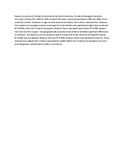| dc.contributor.author | Bovill, EG | |
| dc.contributor.author | Kung'u, A | |
| dc.contributor.author | Bencivenga, A | |
| dc.contributor.author | Jeshrani, MK | |
| dc.contributor.author | Mbindyo, BS | |
| dc.contributor.author | Heda, PM | |
| dc.date.accessioned | 2015-07-23T14:09:11Z | |
| dc.date.available | 2015-07-23T14:09:11Z | |
| dc.date.issued | 1985-06 | |
| dc.identifier.citation | nternational Orthopaedics June 1985, Volume 9, Issue 1, pp 59-63 | en_US |
| dc.identifier.uri | http://link.springer.com/article/10.1007/BF00267039 | |
| dc.identifier.uri | http://hdl.handle.net/11295/88694 | |
| dc.description.abstract | Kenya is a country of marked environmental and ethnic diversity. A study of osteogenic sarcoma occurring in Kenya from 1968 to 1978 revealed 251 cases, representing between 89% and 100% of the predicted number. Variations in age, sex and anatomical location were within classical limits. However, the incidence of osteogenic sarcoma amongst the Central Bantu was significantly higher than predicted (P<0.0001), whilst the incidence among the Western Bantu was significantly lower (P<0.002), despite their similar ethnic origins. Two geographically dissimilar areas likewise exhibited significant differences in incidence. The Eastern province showed a higher incidence (P<0.02), whereas the Nyanza Province (P<0.001) and the adjacent Western Province (P<0.005) showed a lower than predicted incidence. These observations suggest that in Kenya a geomedical variable affects the incidence of osteogenic sarcoma and that genetic variation has no effect on incidence. | en_US |
| dc.language.iso | en | en_US |
| dc.publisher | University of Nairobi | en_US |
| dc.title | An epidemiological study of osteogenic sarcoma in Kenya | en_US |
| dc.type | Article | en_US |
| dc.type.material | en | en_US |

